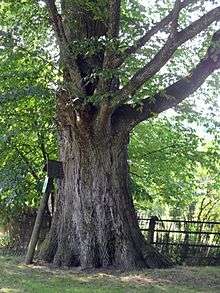Brachyopa scutellaris
Brachyopa scutellaris is a European species of hoverfly.[1][2][3][4]
| Brachyopa scutellaris | |
|---|---|
.jpg) | |
| Brachyopa scutellaris Wales | |
| Scientific classification | |
| Kingdom: | |
| Phylum: | |
| Class: | |
| Order: | |
| Family: | |
| Subfamily: | |
| Tribe: | |
| Genus: | |
| Species: | B. scutellaris |
| Binomial name | |
| Brachyopa scutellaris Robineau-Desvoidy, 1843 | |
Description
External images
For terms see Morphology of Diptera
The wing length is 6·5-7·75 mm. Apical antennomere with a large kidney-shaped sensory pit
Tergite 2 posterolaterally black pilose.[5] The larva is illustrated by Rotheray (1993).[6]
Distribution
Brachyopa scutellaris is a west Palearctic species with a distribution centred in Europe (Denmark to the Pyrenees, Ireland east through Central Europe to Switzerland).[7][8]

Habitat and biology
The habitat is deciduous forest (Acer, Alnus, Ulmus, Fraxinus). The flight period is mid April to end June. Brachyopa scutellaris flies, pendulously, in sunlit patches beside living trees with sap runs (where the larvae develop) and around rot-holes. Flowers visited include white umbellifers, Cardamine, Crataegus, Malus, Cornus, Photinia, Rubus fruticosus, Sorbus and Viburnum.[9][10]
References
- Stubbs, Alan E. & Falk, Steven J. (1983). British Hoverflies: An Illustrated Identification Guide (2nd (revised) ed.). British Entomological & Natural History Society. p. 271, xvpp. ISBN 0-9502891-3-2.
- Van Veen, M. (2004) Hoverflies of Northwest Europe: identification keys to the Syrphidae. 256pp. KNNV Publishing, Utrecht.
- Van der Goot,V.S. (1981) De zweefvliegen van Noordwest - Europa en Europees Rusland, in het bijzonder van de Benelux. KNNV, Uitgave no.32: 275pp. Amsterdam.
- Bei-Bienko, G.Y. & Steyskal, G.C. (1988) Keys to the Insects of the European Part of the USSR, Volume V: Diptera and Siphonaptera, Part I. Amerind Publishing Co., New Delhi. ISBN 81-205-0080-6.
- Coe, R.L. (1953) Diptera: Syrphidae. Handbks. ident. Br. insects, 10(1): 1-98. R. Ent. Soc. London.
- Rotheray G., 1993 Colour Guide to Hoverfly Larvae Diptera, Syrphidae in Britain and Europe Dipterists Forum pdf Archived 2019-04-03 at the Wayback Machine
- Fauna Europaea
- Peck, L.V. (1988) Syrphidae. In: Soos, A. & Papp, L. (eds.) Catalogue of Palaearctic Diptera, 8: 11-230. Akad. Kiado, Budapest.
- de Buck, N. (1990) Bloembezoek en bestuivingsecologie van Zweefvliegen (Diptera, Syrphidae) in het bijzonder voor België. Doc.Trav. IRSNB, no.60, 1-167.
- Speight, M.C.D. (2011). "Species accounts of European Syrphidae (Diptera)" (PDF). Syrph the Net, the database of European Syrphidae. 65: 285pp.